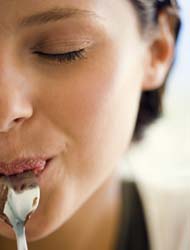
I remember when I was a kid (and this will make me sound really old) the first time I ate McDonald’s.
It was on a family trip to the big smoke, where one of the very first McDonald’s restaurants had opened. It was all very novel, and I think I even pasted the packet from the fries into my holiday scrapbook. It was a huge treat. The same went for fizzy drinks – which we had only at birthday parties or Christmas – and even fruit juice. I think we were a pretty normal family of the 70s and 80s in that respect. Sweet things were fruit, home baking or the occasional plain biscuit. Trips to pizza or burger places were special occasion or holiday treats.
Fast forward to today, and our concept of what is and isn’t a ‘treat’ has become warped.
The treat foods of my childhood are everywhere now. What was a treat has become commonplace. What’s more, many of these foods are marketed and positioned as everyday foods. The burgers and pizzas are regular meals, surrounding us, easily accessible. What’s more, they’re cheap. Burger King’s ‘Change Range’ offers a frozen Coke for $1 or a barbecue beef burger for $2. For $5 or $6 at McDonald’s you can choose a ‘Cheesy Deal’ burger with fries and a Coke. Domino’s will sell you a Value Range pizza for $4.99. The same is true of things we might buy in cafes, now an everyday pitstop for many of us. Muffins, quiches, pies and pastries are inexpensive and regularly consumed items, where perhaps once they would have been what Dietitians call ‘sometimes foods’.
And then we have ‘indulgent’ treats. I don’t think it is good to associate any type of food with feelings of guilt – it’s such a negative way to think about eating. But many of the marketing messages around chocolate and sweets are about ‘giving in to temptation’. This language spills into food magazines and TV shows, which feature ‘decadent’ baking and ‘tempting’ treats. The implication being that if we eat these things we are being wilfully wicked and rebellious, or worse – morally weak. If we’re trying to cultivate a healthy relationship with food, this language is not helpful.
So what is a treat, then? And is a treat something you have every day? I think a good way to think about treats is as fun foods. They’re things we don’t need; they’re things we eat for pleasure. It can be easy to forget that a crucial part of eating in a healthy way is truly enjoying our food.
A treat will be different for different people. For some it might be those crunchy McDonald’s fries, for some it might be chocolate; for others a piece of sourdough with butter; for others a glass of wine. For me it’s hard to beat a few really good, plain potato chips. Whatever your favourite treat food, the key is that it’s eaten occasionally – not every day – and truly savoured. A treat will be more enjoyable and satisfying when eaten mindfully, not guiltily. It’s probably likely to be less enjoyable when it’s wolfed down in the middle of a busy day. The chocolate pudding on the cover of our August issue is a good example of a treat dessert; it’s meant to be savoured every now and then.
What are your favourite treat foods – and how do you like to enjoy them?
www.healthyfood.com










